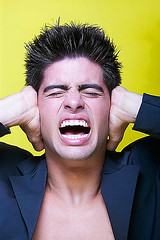By Dr Dave Edenfield
Being pregnant means having to deal with changes in the
body. Everything from a patient’s
hormones, to weight gain and even the center of gravity will be affected during
pregnancy, particularly in the third trimester.
These changes create stresses which can present themselves as aches and
pains, particularly in the lower back.
The added pressure can also irritate nerve endings, causing additional
discomfort.
During pregnancy, the body increases the production
of the enzyme relaxin that loosens the ligaments and hastens delivery. While instrumental in allowing a woman to
complete the final stages of pregnancy, this same enzyme also instigates an
alteration in the back’s natural curvature, placing added pressure on joints
and spinal discs. Studies have shown that up to 56% of women
experience lower back pain during pregnancy and up to 75% experience discomfort
at night.
Lower back pain is
often associated with pregnancy, due to the fact that as the uterus grows it
causes the pelvis to tilt and the hips to flex.
The muscles of the hips, legs and abdomen in trying to compensate as the
center of gravity shifts, can bring on everything from muscle spasms to facial
pain and headaches. It has also been
reported by the National Institute of Health, that,
“There may be a relationship between back pain
throughout pregnancy and a longer duration of the labor and delivery process. A
retrospective review of statistics reported that women who seek chiropractic
care throughout gestation have, on average, a 25% shorter labor time, whereas
women who seek chiropractic care throughout their pregnancy have, on average,
31% shorter labor times.”
The report also states
that 75% of patients who received chiropractic care during pregnancy reported
less overall pain than those who did not.
Additionally, the survey of 400 pregnant women concluded that in 84% of the
cases the women who received chiropractic care during pregnancy indicated
significant relief from lower back pain during pregnancy. It also recommends exercise.
“Evidence also exists that women who exercise
during pregnancy have more energy, fewer mood swings, are able to manage stress
more effectively, and achieve more restful sleep compared with sedentary
pregnant women. Women who exercise gain 21% less weight throughout
gestation; enjoy shorter, easier labors (decreased by an average of 2 hours);
experience fewer medical interventions (24% fewer cesarean deliveries and 14%
reduction in use of forceps); experience less fetal distress; and enjoy a
faster recovery. With their
training, chiropractors can also help the pregnant patient manage an exercise
routine compatible for her changing body throughout pregnancy.”
Best of all, chiropractic
adjustments have not only proven useful in relieving much of the pain that
women commonly endure during pregnancy, they can also shorten labor times. That’s one pregnant pause that every woman
would just as soon do without.
Dr. Dave Edenfield and
Dr. Steven Warfield are part of the team of
doctors and therapists at http://chiropractor-jacksonville-fl.com who
are dedicated to helping you and your family lead
healthier, happier and pain-free lives.














